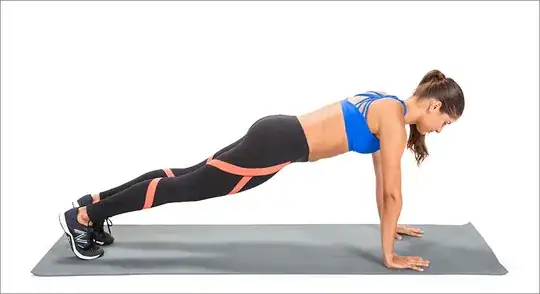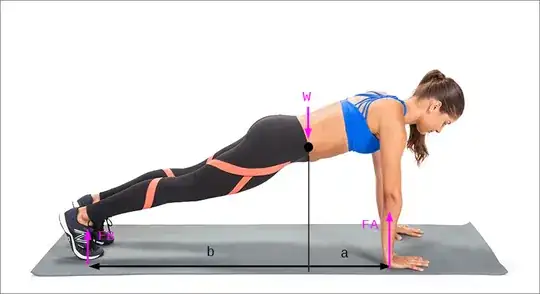This high plank is an example of a 2nd class lever. The fulcrum is at the feet, the load is at the centre of gravity of the body, and the effort is at the hands.
If I know:
- My weight (the load force).
- The distance from my hands to my feet (the effort distance).
- The distance from my centre of my gravity to my feet (the load distance).
How can I work out the effort force exerted by my hands on the floor? I am trying to calculate the mechanical advantage (MA = Load force/ Effort force) as well, but I need to know the effort force first.

